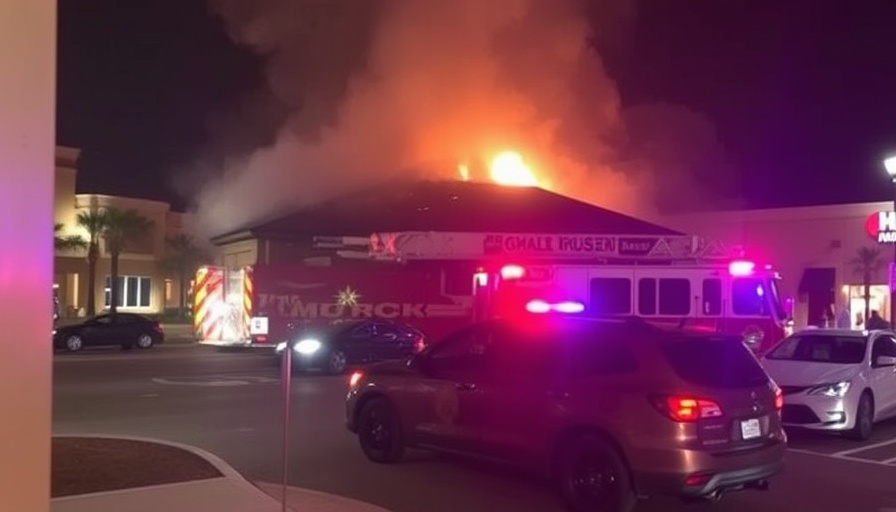
Revolutionizing Emergency Response in Euless
The recent launch of the Euless Police Department's Drone as First Responder program marks a significant leap in emergency response technology. By strategically placing drones on rooftops throughout the city, the program aims to ensure that critical information reaches first responders in a matter of seconds. This innovation is designed to enhance situational awareness during urgent calls, providing police and fire personnel with real-time aerial visuals before they even arrive on the scene.
The Impact of Speed on Emergency Management
As Officer Tyler Killman of the Euless Police Department notes, every second counts in emergency situations. "Sometimes it's just a few seconds that changes how we respond to a call or we get there just after a critical moment," he explains. By having aerial intelligence at their disposal, responders can quickly assess the situation and allocate necessary resources more effectively. This proactive approach could mean the difference between containment and escalation in incidents ranging from traffic crashes to suspicious activities.
Comparison with Other North Texas Initiatives
Euless is now the second department in North Texas to employ such drone technology, following a trend that indicates a growing confidence in drone capabilities across the region. Cities like Dallas and Fort Worth have also begun integrating drone technology within their emergency response frameworks, indicating a newfound reliance on aerial surveillance in public safety. As these programs become more prevalent, we can expect a transformative shift in how emergency services operate, with data-driven intelligence leading the way.
Past Experiences Shape Future Solutions
The inspiration for this cutting-edge program stems from Euless's existing drone operations initiated in 2018. While previously deployed mobile units required time to reach emergency scenes, the new approach innovates this model by allowing drones to automatically navigate to specific locations where operators can take over remotely. This advancement illustrates how past experiences with drone technology are informing current methodologies and driving future improvements.
Drones as a New Resource for Public Safety
Understanding the full scope of capabilities these drones offer is essential for communities. The integration allows for a wide range of emergency responses, from monitoring disturbances to assessing fire risks. This not only enhances the safety of first responders by providing them with pertinent visuals but also serves to reassure the community knowing that their law enforcement agencies are equipped with state-of-the-art technology. The real-time feed from aerial perspectives can help inform dispatchers about the ongoing situation, and facilitate quicker, more effective decision-making.
The Future of Emergency Response Technology
With the implementation of programs like those in Euless, we can anticipate a future where drone technology becomes commonplace in public safety. This evolution signifies not just an improvement in mobility and speed, but also the potential for drones to handle more complex tasks. The technology could soon incorporate AI-driven analytics to predict conditions or assess situations in ways human responders cannot, thus revolutionizing how emergencies are managed.
As cities adapt to these advancements, potential for growth within the drone sector opens up avenues for businesses as well. The rising demand for drone operations in urban settings indicates a burgeoning industry ripe with opportunities for tech entrepreneurs and service providers alike.
Conclusion and Invitation to Engage
The introduction of the Drone as First Responder program in Euless is a significant milestone for emergency services in North Texas. This innovative leap into drone technology provides a model for cities worldwide contemplating similar deployments. As these technologies develop, both communities and businesses can gain tremendous benefits, catalyzing a new era of public safety that prioritizes efficiency, transparency, and rapid response.
 Add Row
Add Row  Add
Add 




 Add Row
Add Row  Add
Add 


Write A Comment